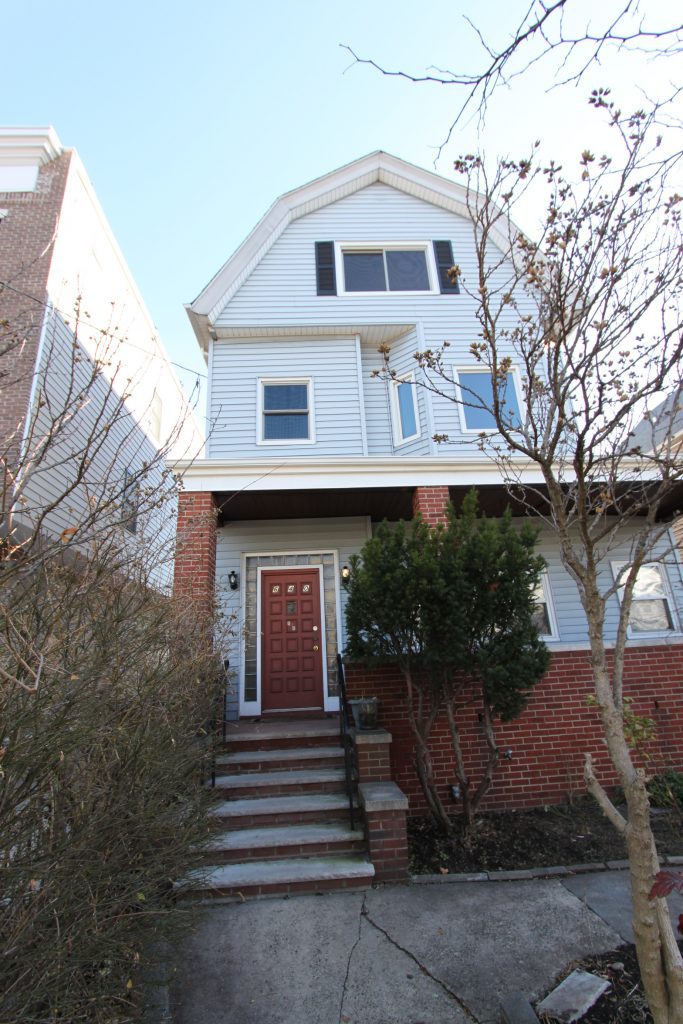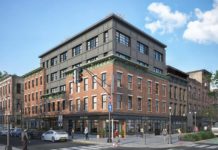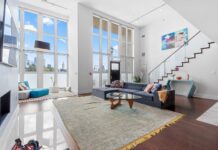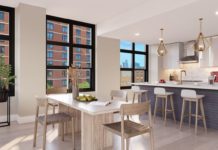This is the first part of our series covering the construction of Jersey City’s first certified passive house. You can read Part Two here.
This series is a collaboration with Mowery Marsh, the architects leading this project.
The passive house movement has made its way to Jersey City. Specifically to the Heights, where Jersey City’s first house is being renovated using passive building principles.
WHAT IS A PASSIVE HOUSE?
Originating in Germany in the 1990’s, the Passivhaus concept is quite simple: seal a building airtight and then thoroughly insulate it. In doing so, the building is less susceptible to the external climate. This prevents large temperature fluctuations, which in turn, reduces the amount of energy required to heat or cool the interior.
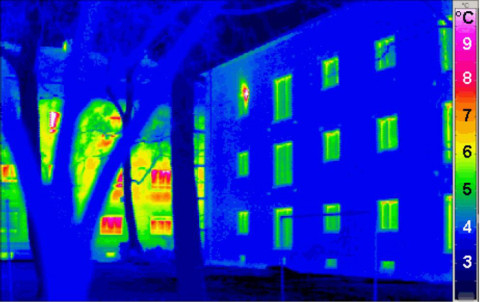
And the best part? It’s not that expensive. Instead of spending thousands on oversized heating and cooling mechanicals, you instead reallocate those funds to sealing and insulating. After which, temperatures can be controlled by much smaller heating and cooling units. It’s generally accepted that passive buildings cost 5-10% more than conventional buildings to construct. But as the trend grows the industry will see economies of scale ultimately bringing down the price of many required components.
The only mechanical addition required in a passive house is an Energy Recovery Ventilator (ERV), which prevents the build up of stale air inside the building. An ERV works by drawing fresh air in from the outside and then through a heat exchanger that matches the temperature to that of the interior.
The benefits extend beyond simply reducing energy costs. The robust assembly of insulation, sealing & high-efficiency windows also acts as a sound barrier, blocking out outside noise. For those in an urban setting this is a huge benefit. Furthermore, the ERV filters the incoming air, removing allergens resulting in a fresher, cleaner interior.
PASSIVE HOUSES IN NYC
With a potential of up to 90% reduction in energy costs the trend is gaining traction here in New York. Not surprisingly, Brooklyn has led the charge with about 22 projects even outpacing Manhattan.
And it’s not just limited to upscale single-family dwellings. Cornell is building a passive tower on Roosevelt Island and Habitat for Humanity is building numerous passive affordable housing projects across the county.
JERSEY CITY’S FIRST PASSIVE HOUSE
Hoboken architecture firm Mowery Marsh is designing and overseeing the construction of the first passive house in Jersey City. They’ve also called in the experts at Levy Partnership who will act as the Building Science Passive House consultant.
But this isn’t Mowery Marsh’s first time bringing passive house standards to the area. They first renovated their Hoboken row house to passive standards. Triple-glazed windows, super insulated walls and an airtight envelope keep the external temperatures at bay. Now, the 1,400 square foot, three level living space costs a mere $25 a month to heat and cool using one wall mounted mini-split unit on each level. And when it comes to sound benefits, that trash truck that used to wake them up every morning has since been silenced.
The Marsh’s Hoboken house is will be featured in the book The Small House by Katie Hutchinson coming out this month. You can also see photos of their home here: Passive Hoboken Row House
Back in Jersey City, the house at 640 Palisade Ave, is a Victorian style detached single family – which presents a bigger challenge. Whereas in their Hoboken row house, there were only 4 sides to seal (front, back, top, bottom) – this one is fully exposed on all sides. But they’re up for the challenge.
Jersey Digs will be doing a series of posts following the construction process as it unfolds. With so much development and renovation happening in Jersey City, hopefully we’ll be seeing more and more passive projects.
In the next post, we’ll get into the gritty details about the Jersey City project.

